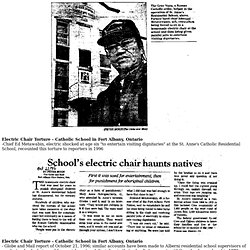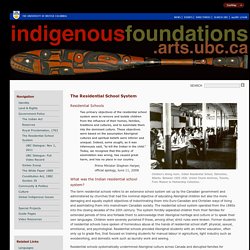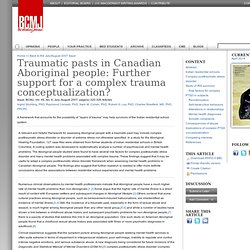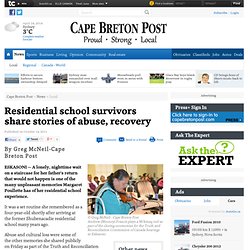

Thomas Moore before and after his entrance into the Regina Indian Residential School in Saskatchewan in 1874. Government conducted nutrition experiments on hungry, malnourished Aboriginal children: paper. Recently published historical research says hungry aboriginal children and adults were once used as unwitting subjects in nutritional experiments by Canadian government bureaucrats.

“This was the hardest thing I’ve ever written,” said Ian Mosby, who has revealed new details about one of the least-known but perhaps most disturbing aspects of government policy toward aboriginals immediately after the Second World War. Mosby — whose work at the University of Guelph focuses on the history of food in Canada — was researching the development of health policy when he ran across something strange. This was the hardest thing I’ve ever written “I started to find vague references to studies conducted on ‘Indians’ that piqued my interest and seemed potentially problematic, to say the least,” he said. “I went on a search to find out what was going on.” They found people who were hungry, beggared by a combination of the collapsing fur trade and declining government support. Electric Chair Torture - Catholic School in Fort Albany, Ontario. Electric Chair Torture - Catholic School in Fort Albany, Ontario-Chief Ed Metawabin, electric shocked at age six "to entertain visiting dignitaries" at the St.

At least 3,000 died in residential schools, research shows - Canada. At least 3,000 children, including four under the age of 10 found huddled together in frozen embrace, are now known to have died while they were attending Canada's aboriginal residential schools, according to new unpublished research. From the late 19th century onwards, aboriginal children in Canada were forced to attend government-run residential schools, where they suffered emotional, physical and sometimes sexual abuse at the hands of church teachers (Library & Archives Canada/PA-042133) While deaths have long been documented as part of the disgraced residential school system, the findings are the result of the first systematic search of government, school and other records. "These are actual confirmed numbers," Alex Maass, research manager with the Missing Children Project, told The Canadian Press from Vancouver.
"All of them have primary documentation that indicates that there's been a death, when it occurred, what the circumstances were. " About 500 of the victims remain nameless. Residential Schools and their Affects on First Nations. "Residential schools.”

On the surface, the term sounds benign, even bucolic, the sort of place where upper-class Britons would send their children in preparation for Oxford. Family Circle. Children's dining room, Indian Residential School, Edmonton, Alberta.

Between 1925-1936. United Church Archives, Toronto, From Mission to Partnership Collection. Good Work Ethics. Mental Health Issues. Numerous clinical observations by mental health professionals indicate that Aboriginal people have a much higher rate of mental health problems than non-Aboriginals.[1,2] Some argue that the higher rate of mental illness is a direct result of contact with European settlers and subsequent changes in Aboriginal lifestyle.[3] Others contend that some cultural practices among Aboriginal people, such as bereavement-induced hallucinations, are misidentified as evidence of mental illness.[3,4] Still, the incidence of a traumatic past, especially in the form of sexual abuse and assault, is much higher among Aboriginal people than any other racial group,[5,6] and while a number of studies have shown a link between a childhood abuse history and subsequent psychiatric problems for non-Aboriginal people,[7] there is a paucity of studies that address this link in an Aboriginal population.

Indian residential schools Complex posttraumatic stress disorder Study of IRS survivors Revictimization Table 1. Loss of Culture. It was a set routine she remembered as a four-year-old shortly after arriving at the former Shubenacadie residential school many years ago.

Abuse and cultural loss were some of the other memories she shared publicly on Friday as part of the Truth and Reconciliation Commission of Canada hearings in Eskasoni. It has been estimated that about 150,000 students suffered abuse, cultural losses and even death at residential institutions, which operated from the 1870s through the 1970s. “I saw a lot of abuse in classrooms,” said Poullette who attended the church run boarding school for four years.